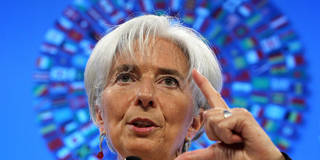In the tenth year since the start of the global financial crisis, the US economy reached a new high-water mark, and the global economy exceeded expectations. But whether these positive trends continue in 2018 will depend on a variety of factors, from fiscal and monetary policymaking to domestic politics and regional stability.
STANFORD – All major macroeconomic indicators – growth, unemployment, and inflation – suggest that 2017 will be the American economy’s best year in a decade. And the global economy is enjoying broad, synchronized growth beyond what anyone expected. The question now is whether this strong performance will continue in 2018.
The answer, of course, will depend on monetary, fiscal, trade, and related policies in the United States and around the world. And yet it is hard to predict what policy proposals will emerge in 2018. There are relatively new heads of state in the US, France, and the United Kingdom; German leaders still have not formed a governing coalition since the general election in September; and the US Federal Reserve has a new chair awaiting confirmation. Moreover, major changes in important developing economies such as Argentina, Saudi Arabia, and Brazil have made the future outlook even murkier.
Still, we should hope for the best. First and foremost, we should hope that synchronized global growth at a rate of just under 4% will continue in 2018, as the International Monetary Fund projected in October. Growth not only raises incomes, but also makes vexing problems such as bad bank loans and budget deficits more manageable. As former US President John F. Kennedy famously said in an October 1963 speech in which he promoted his proposed corporate and personal tax reductions, “a rising tide lifts all boats.”

STANFORD – All major macroeconomic indicators – growth, unemployment, and inflation – suggest that 2017 will be the American economy’s best year in a decade. And the global economy is enjoying broad, synchronized growth beyond what anyone expected. The question now is whether this strong performance will continue in 2018.
The answer, of course, will depend on monetary, fiscal, trade, and related policies in the United States and around the world. And yet it is hard to predict what policy proposals will emerge in 2018. There are relatively new heads of state in the US, France, and the United Kingdom; German leaders still have not formed a governing coalition since the general election in September; and the US Federal Reserve has a new chair awaiting confirmation. Moreover, major changes in important developing economies such as Argentina, Saudi Arabia, and Brazil have made the future outlook even murkier.
Still, we should hope for the best. First and foremost, we should hope that synchronized global growth at a rate of just under 4% will continue in 2018, as the International Monetary Fund projected in October. Growth not only raises incomes, but also makes vexing problems such as bad bank loans and budget deficits more manageable. As former US President John F. Kennedy famously said in an October 1963 speech in which he promoted his proposed corporate and personal tax reductions, “a rising tide lifts all boats.”